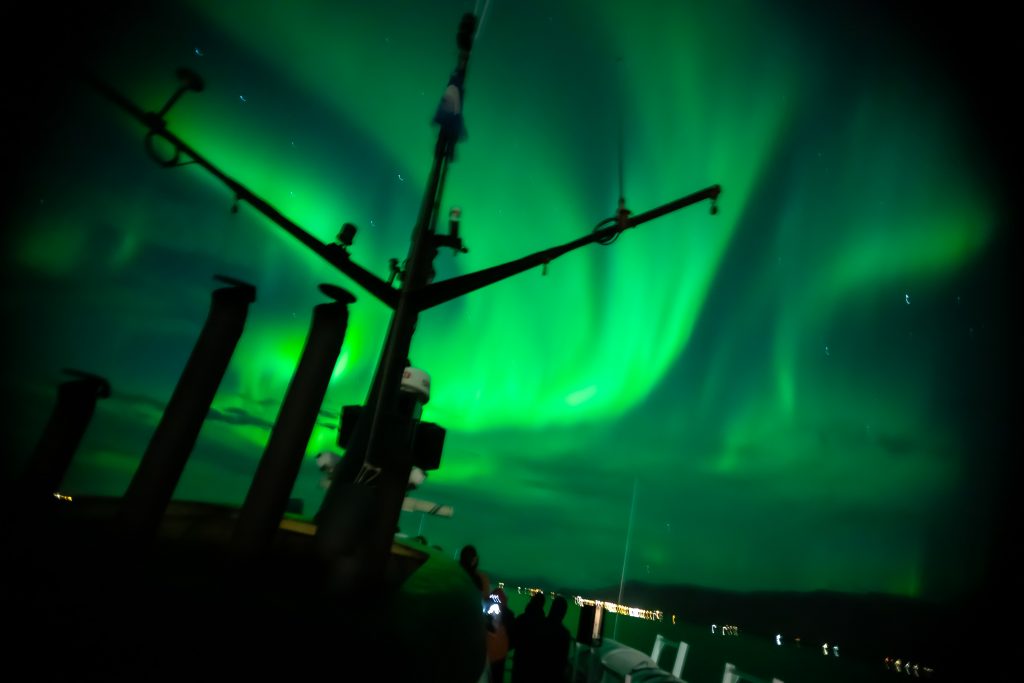What To Bring On Your Northern Lights Boat Tour!
If you’re lucky enough to see the Northern Lights during your Iceland trip, it will be a lifelong
memory. These fickle green and purple ribbons dance across darkened skies when high
levels of solar activity coincide with clear, cloudless skies. They’re not guaranteed, but when
they do show up, it’s a truly magical sight.
The Northern Lights and summer don’t go together
The long hours of daylight make sightings of the Aurora Borealis impossible. Instead, you’re most likely to catch a glimpse of
them between September and April, which means you’re going to need to dress for cold
temperatures. The uncertainty associated with aurora hunting means that there’s likely to be a far amount
of down time, either waiting for the lights to show, or while you watch them dance. Here’s
what we suggest you should bring on your Northern Lights boat tour.
The right kind of base layer is essential
Getting the base layer right is crucial. The job of the piece of clothing closest to your skin is
to make sure it doesn’t get damp. If it does, you start to feel cold. So you need something
that will absorb sweat and wick away that moisture. Synthetics and wool such as merino are
excellent in this respect; cotton is not as it doesn’t dry out once wet. Opt for long sleeves, of
course.
What to put on top
Over your base layer, add a decent fleece or a thick wool jumper. Warm air is trapped
between the layers and that will prevent you from feeling the cold. A high performance
outer layer, preferably one that’s windproof, should keep you warm and toasty. Don’t forget
your legs: they too will feel the benefit of thermal leggings or long johns beneath a pair of
ski trousers.
Happy feet
Two pairs of socks, ideally merino wool, inside some thick-soled boots such as ski boots or
heavy duty walking boots, should keep your feet from being freezing cold. You might also
consider thermal insoles, but check your boots will still fit! Choosing something with a good
grip is also a consideration.
Remember to take care of your extremities
Lastly, keep your extremities cozy. Scientists have debunked the theory that we lose most of
our body heat through our head, but it still makes a lot of sense to put something on it.
Along with a suitable hat, pop on a scarf or snood to protect your neck and lower face from
the elements. Padded gloves are a good idea, but if you plan to use a camera then they’re
not very practical. You can buy gloves with conductive tips on each finger. These let you
operate a touch screen, such as on your camera or mobile phone.
Recording the occasion
Most of us like to record those special moments when we travel and seeing the Northern
Lights are definitely going to fall into that category, so take your camera or smartphone.
Make sure you know its settings inside out and don’t underestimate the number of photos
you’ll take – make sure you have plenty of memory available. Battery life is impacted by
extreme cold. Bring spares and keep them in a warm pouch so that you can swap them over
when required.
Follow these guidelines and you’ll be well prepared for your Northern Lights boat tour. Now
all you need to do is cross your fingers and hope they show up.










